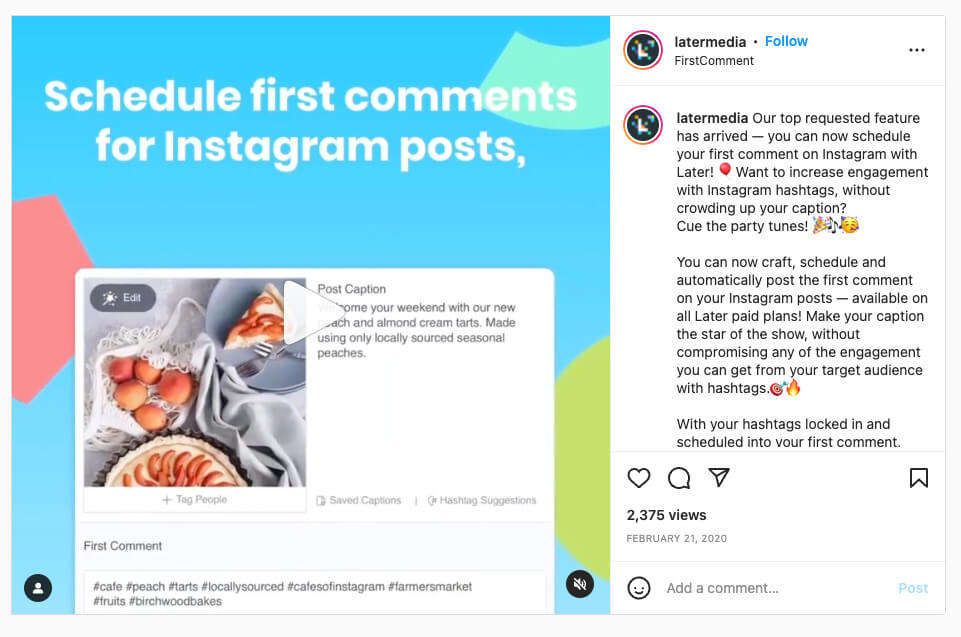No one is better at building anticipation ahead of a launch than Apple. New product launches trigger publicized spec leaks and reveal events draw crowds in the millions (over 2.7 million people watched the iPhone 12 presentation live).
In the iPhone 13’s first quarter, it generated $71.6 billion in revenue (despite parts shortages and a global pandemic).
You don’t have to create Apple-level hype to see a successful new product launch. Trading app Robinhood launched with almost one million users thanks to a pinpointed market need and waitlist pre-launch campaign.
Unfortunately, many product launches take a “build it and they will come approach,” failing to gain traction and eventually fizzling out. These launches lack the key component of promotion and acquisition.
In this article, you’ll learn how to design an effective new product launch plan to avoid this pitfall and generate demand.
Before starting on your new product launch plan, make sure you’ve crafted a product launch strategy. This’ll help you inform and execute the tactical aspects of your product launch plan.
Pre-launch: Paving the way for a successful product launch
The pre-launch stage is often the busiest and most impactful stage of a new product launch. Rushed or poorly planned product launches will flop.
Activities during this phase focus on building brand awareness and anticipation, developing product messaging, identifying key marketing channels, and driving demand for your new product to ensure a successful launch.
1. Challenge yourself to become a product expert
Some marketers stop learning about their product after the initial research and strategy development. In reality, you’ll be learning and adapting your product and strategy as you gain more insights from your customers.
Through the entire product lifecycle, the product marketing manager (PMM) and their team should be the masters of the new product. Using the product marketing strategy you’ve developed, your product marketing team must know:
- What the product does;
- Why it exists;
- Who it serves;
- How it helps them, and;
- Why it’s the best option.
You’ll continually develop this expertise by working closely with other departments. Learn from marketing, sales, and customer success what customers are raving and ranting about.
Interview product managers and engineers to gain a technical understanding of the product. Or better yet, use the product yourself. Tie challenges back to your product benefits.
Slite, a digital workplace for async teams, connects their customers’ challenges to their product benefits on their ”Discussions” feature landing page.

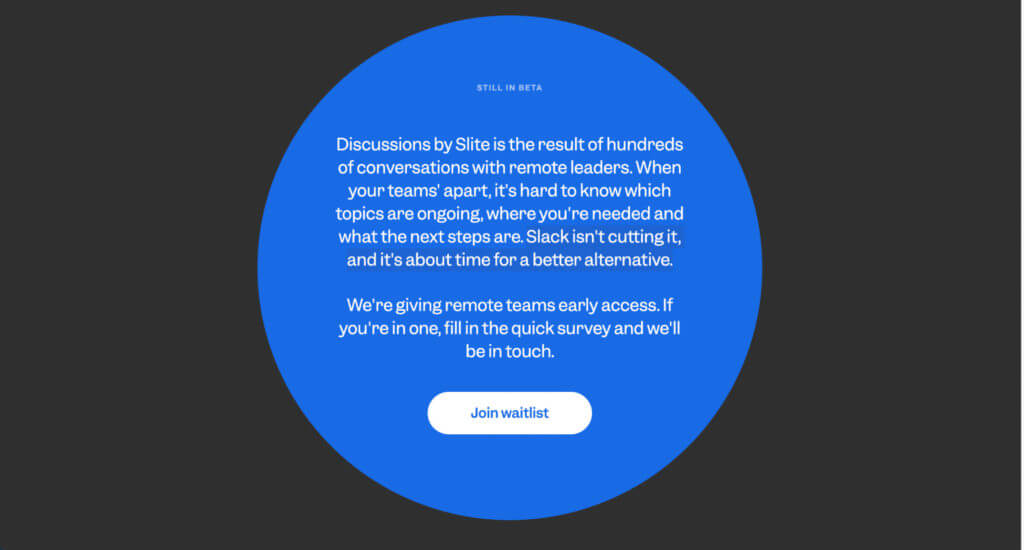
Slite found that a common frustration around a competitor’s tool is communication getting lost in Slack threads.
Instead of dancing around the topic, they called it out on the landing page:
- “A place for more focused discussions.”
- “Tired of endless Slack threads?”
- “Slack isn’t cutting it, and it’s about time for a better alternative.”
Learn all you can from market research and by interacting with other teams. Then tie your customers’ challenges to benefits in the clearest way possible.
2. Generate excitement and buy-in with an internal press release
Create an internal press release to communicate your positioning with your entire team.
Having a single source of truth document ensures clarity and consistency across marketing, sales, product, and customer success teams. It also builds internal excitement for the new product launch.
Amazon’s former director, Ian McAllister, describes a framework he uses for internal press releases:
“Heading: Name the product in a way the reader (i.e. your target customers) will understand.
Subheading: Describe who the market for the product is and what benefit they get. One sentence only underneath the title.
Summary: Give a summary of the product and the benefit. Assume the reader will not read anything else so make this paragraph good.
Problem: Describe the problem your product solves.
Solution: Describe how your product elegantly solves the problem.
Quote from You: A quote from a spokesperson in your company.
How to Get Started: Describe how easy it is to get started.
Customer Quote: Provide a quote from a hypothetical customer that describes how they experienced the benefit.
Closing and Call to Action: Wrap it up and give pointers where the reader should go next.”
Keep it short and simple (under a page and a half), and avoid overly corporate or technical language. McAllister revealed his trick for communicating the product’s unique positioning and messaging is to pretend you’re talking to Oprah:
“Imagine you’re sitting on Oprah’s couch and have just explained the product to her, and then you listen as she explains it to her audience.’”
The press release should help shape every aspect of product development. The product team can refer back to the document, asking at all times if what they’re developing meets the brief.
Doing so will keep the product team focused on customer benefits and help them avoid wasting resources on features that aren’t important.
3. Building genuinely useful marketing personas
Often, marketing personas are empty, unrealistic imitations of who marketers hope their customers are. This happens when the persona development process is top-down instead of bottom-up.
Rand Fishkin, founder and CEO of SparkToro explains his experience with the typical user persona:
“Build personas → Make sure they get used across the company → Create product and marketing initiatives to employ the personas → Get no benefit at all → Doh!”

Fishkin recommends a five-step approach to creating genuinely useful buyer personas:
- List out the applications your personas are solving for. Who’s doing what with your product? What information might they require to do that work effectively?
- Audit and cull. Identify realistic elements that can be tested and proved through data-gathering exercises.
- Substantiate with data. Leverage internal customer data from social accounts, web analytics, email subscribers, and current product usage data. Scrape insights from market research, industry statistics, and competitor press releases.
Interview your customers, your prospects, and your lost deals to understand real-life needs and challenges. Access audience intelligence from tools like SparkToro, Brandwatch, and Helixa to gather quantitative data at scale.
- Segment your personas. Use the data you’ve gathered to establish the characteristics that separate one group from another. If two or more sets of your market share overlapping behaviors and characters, group them under one persona.
- Settle on a presentation format. Present your personas in a way that makes sense for your team to digest. That might be a Google Doc with a few bullet points, an infographic-style design, or a short video.
HubSpot offers a free tool that creates personas like this:
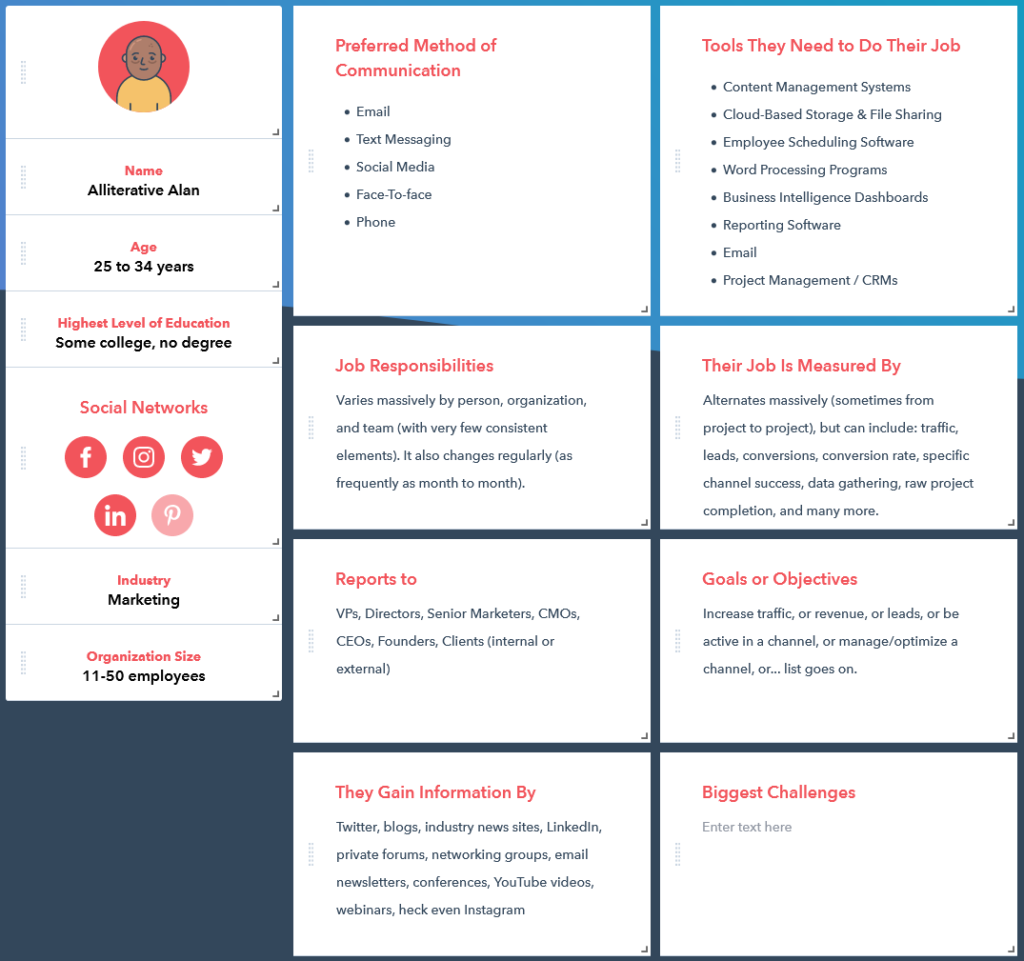
4. Determine which channels you’ll capitalize on
Your product marketing strategy should inform the channels you’ll use to reach your audience (leading up to and including launch day).
Build a list of the specific channels you’re going to use. Then consider:
- What you’re going to share in which locations;
- When you’re going to share it;
- Who is responsible for executing and monitoring each task.
Here are four common channels to build hype and reach before you launch and on launch day.
Paid Media
Consider which channels you’ll allocate ad spend. Your next steps will depend on the channels you use.
For example, will you run Google Ads? You’ll need to determine the key search phrases you’ll target.
Considering a publisher network? You’ll need to identify where your audience is most engaged and ensure your budget is going to the right places.
No matter your chosen channel, ensure messaging and creative tie back to your product marketing strategy.
Organic
Customers who want your new product may come to you through various organic channels, like search and social media.
If you want to encourage organic traffic by investing in content marketing, you’ll need to identify the topics most relevant to your new product users.
You’ll also want to consider how your website needs to change to reflect the new product. Will you need to create a new landing page, feature the product on your homepage, create new content on your blog, etc.?
Take Later, an Instagram marketing platform.
When it dropped a new product feature (first comment scheduling), Later knew it could reach its existing audience on Instagram.
The platform designed an informative video to demonstrate exactly how the new product works, and published it on Instagram where their target users are.
Digital PR
If you have existing relationships with media (newspapers, magazines, radio, online publications), use them to broadcast your launch.
If not, where do opportunities exist to form new relationships?
Develop a strategy for media outreach. Develop easy-access content that journalists, PR, and other media professionals can use (e.g., press releases and brand kits).
Take Happsy, an organic mattress retailer.
When launching its new product, Happsy leveraged PRNewswire’s large reach to promote a press release announcing its certified organic bed-in-a-box.
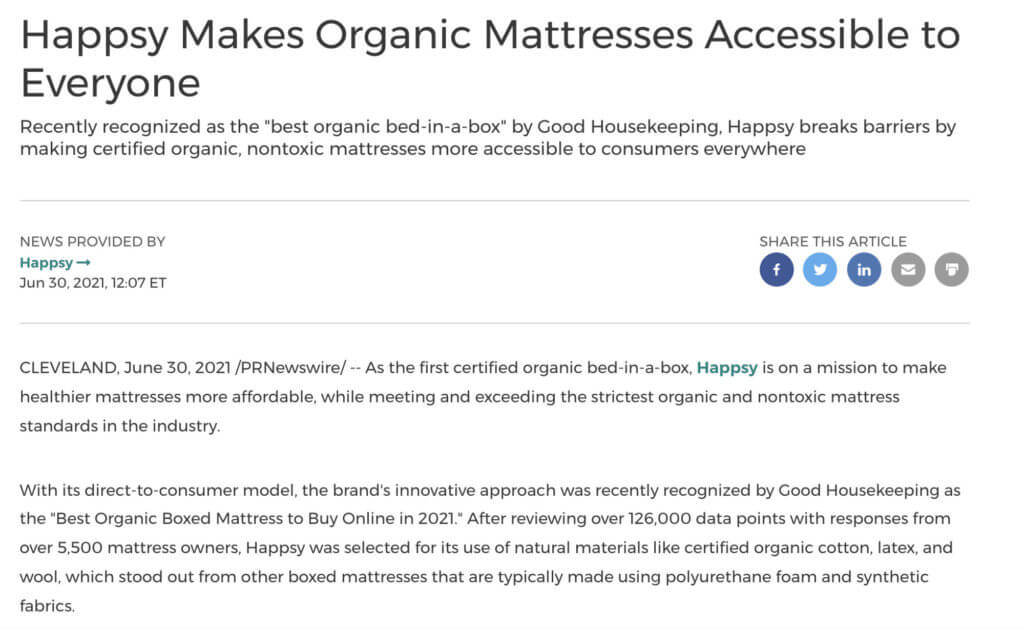
Take advantage of relevant media outlets and include an exclusive offer to entice readers:

Traditional press releases can only take you so far. Happsy leveraged media outlets they had relationships with and issued a press release.
To make a real splash, you have to be where your audience is most active and give them content they’re looking for.
For example, AI video editing software Kamua launched on Product Hunt, where tech-minded individuals learn about new tools.

Their launch campaign on a site targeting their user base gained them so much engagement, they rose to the third “most hunted” product on the site in a day.
Leverage digital PR by showing up where your audience is active and engaging with them on launch day.
Influencers
Think about how you’ll leverage third parties, like thought leaders and other brands, to promote your product and spread your message.
Mention is a platform where you can find influencers and track their activity once employed to see how it’s impacting your reach.
Consequently, Mention put this to good use when marketing its new product. It created an influencer marketing microsite and got other marketing influencers involved to help capture more attention.
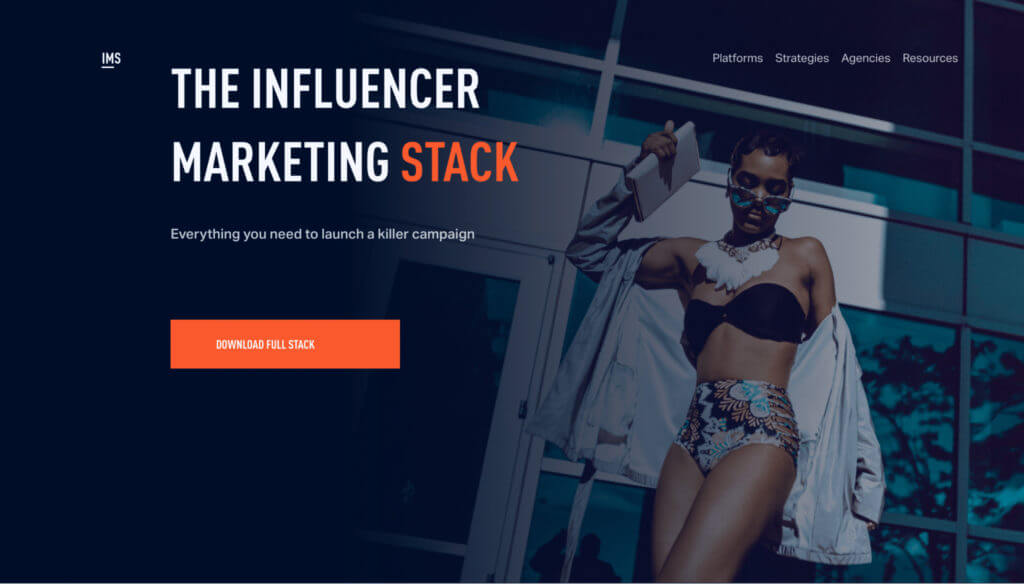
There are many ways to use influencer marketing. Consider:
- Whether you’ll use a partner channel;
- Whether you’re involved in any communities that you might engage;
- If you can leverage online forums like Reddit to maximize reach and conversation;
- Whether you’ll use more formal influencer relationships to promote the new product launch.
Millennials don’t want to be advertised to, which is why many businesses are using influencers instead. Learn your audience’s preferences, then fit your channels to your audience.
5. Increase organic visibility to boost brand awareness and demand
Search engine optimization (SEO) is a crucial growth driver for B2B product launches.
Because organic content can take time to reap traffic rewards, publish before launch. This allows time for pages to be indexed, spark conversation, and rank.
Create high-value, intent-focused long-form content to attract top-of-funnel prospects, based on both product-driven and problem-driven topics.
Take sales CRM Pipedrive. One of their target markets is real estate agents.
Pipedrive uses concise, informative, search-optimized descriptions to win top positions, like this featured snippet for the keyword “real estate CRM.”
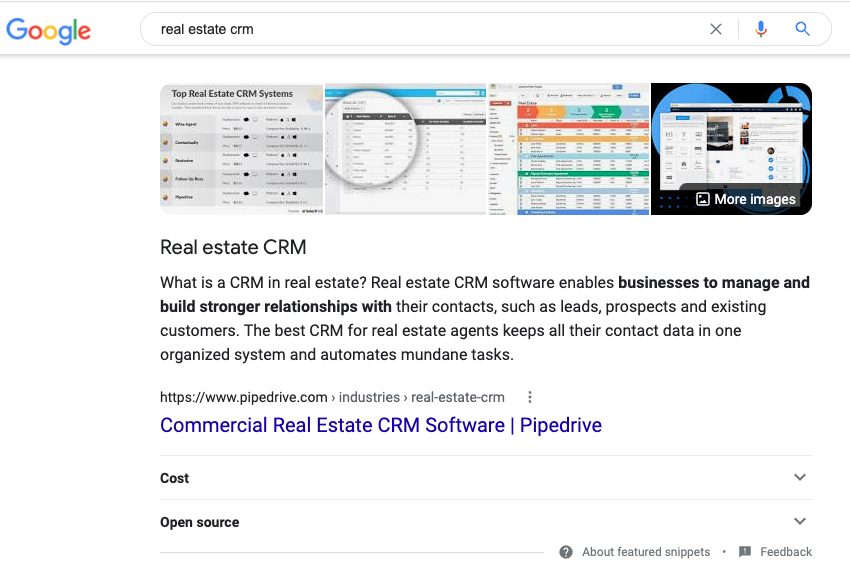
Pipedrive also focuses on developing top-of-funnel, problem-driven content to attract real estate agents struggling with cold-calling and lead generation.
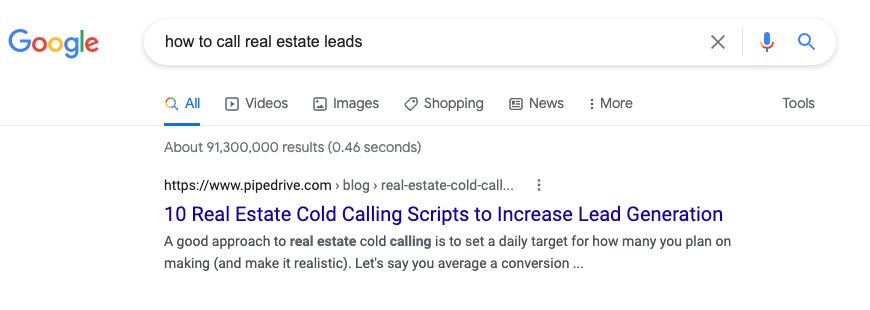
Prioritize topics that have a higher likelihood of ranking.
For example, take these two search phrases “top real estate CRM” and “best CRM for real estate investors.”
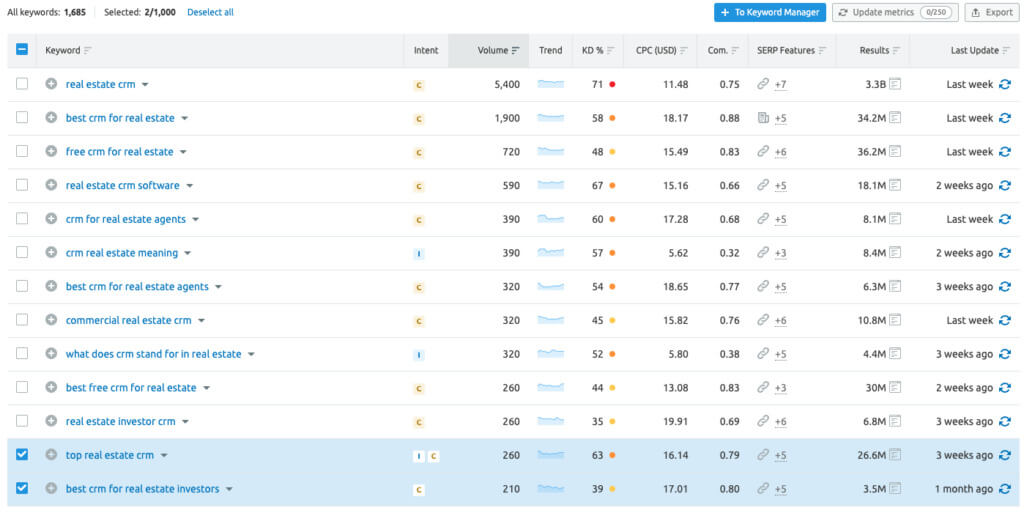
Both keywords have similar monthly search volume, but one has a keyword difficulty of 39% and the other has a difficulty of 63% (according to SEMrush).
Having identified which key search phrases provide the best opportunities, use a tool like Airtable to build out a content calendar, detailing for each piece:
- Topic;
- Headline;
- Keyword;
- Project status;
- Due date;
- Writers and editors responsible;
- Distribution channels.
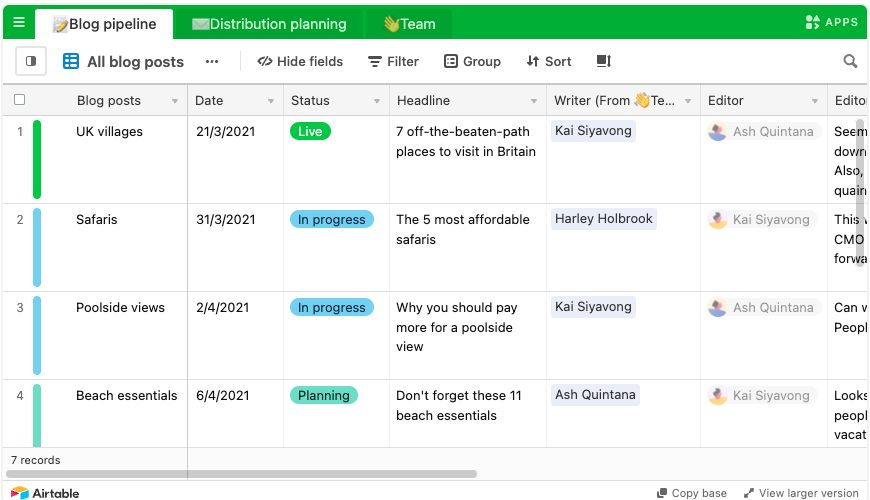
6. Debug website issues and improve user experience
Most of your product launch campaign activities will direct traffic back to your website. So, before launch day, make sure your site is prepared to handle traffic spikes.
OrangeValley found that if their site was just one second slower, their conversion rate dropped by 25%.
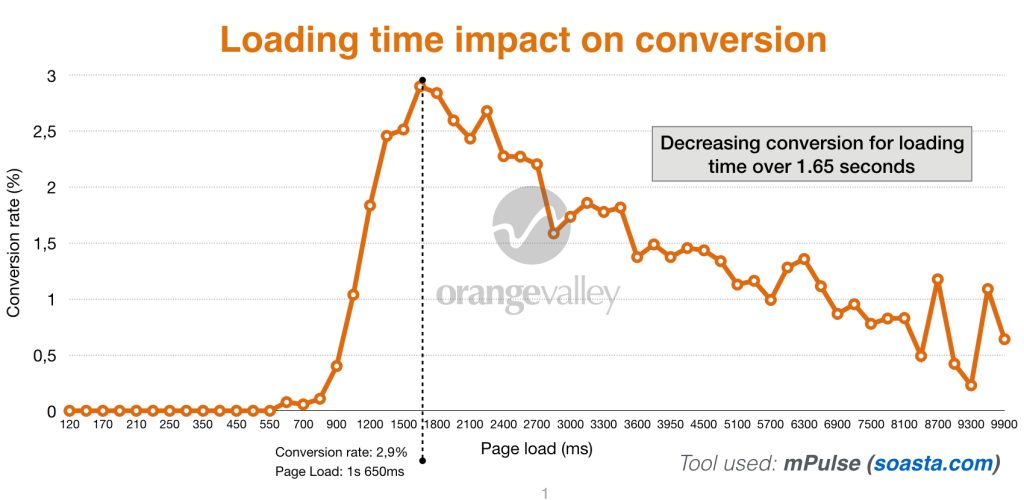
Ensure that your site:
- Has a healthy load speed;
- Is not bogged down by excessive code;
- Doesn’t have any 404 warnings or dead links;
- Is easily navigable;
- Is mobile-responsive;
- Doesn’t host any duplicate content;
- Is secure and uses HTTPS;
- Has an XML sitemap to help search engines crawl and index pages.
Find tools and learn how to fix these issues to prepare your website for traffic and growth in CXL’s article on technical SEO.
7. Collaborate to develop initial messaging
Develop your product messaging in the pre-launch phase, but be prepared to adapt it as you collect customer feedback during and post-launch.
Morgan Molnar, Director of Product Marketing at Momentive, shares a template for developing initial product messaging in her CXL course on product launches.
Use this template to write a short description of your product. Detail key value propositions and the features that deliver them.
Share your product messaging with other teams across marketing, sales, product development, and customer success to gather important feedback.
For example, sales representatives may be able to identify common phrases or language your target audience uses to describe their pain points.



